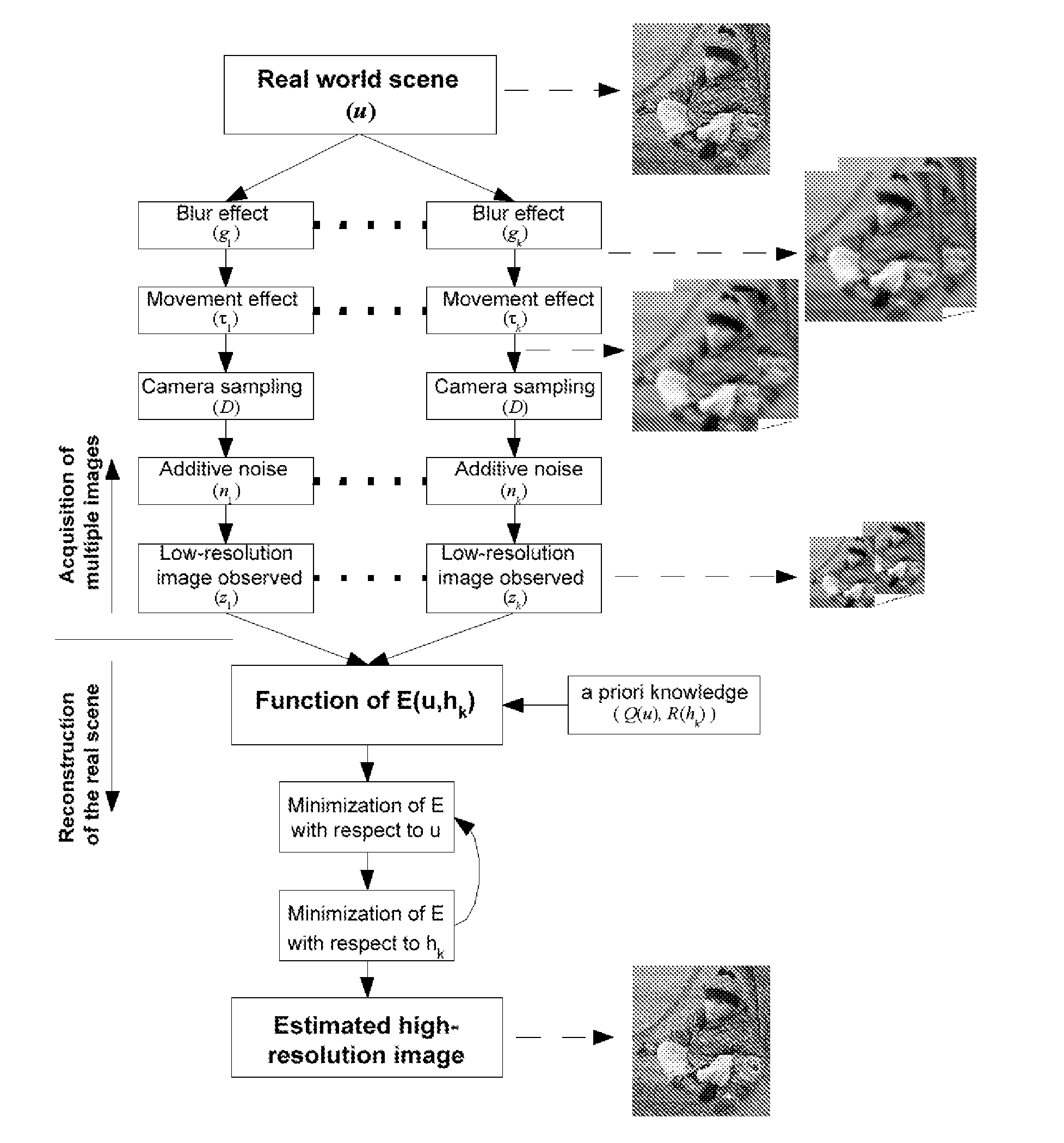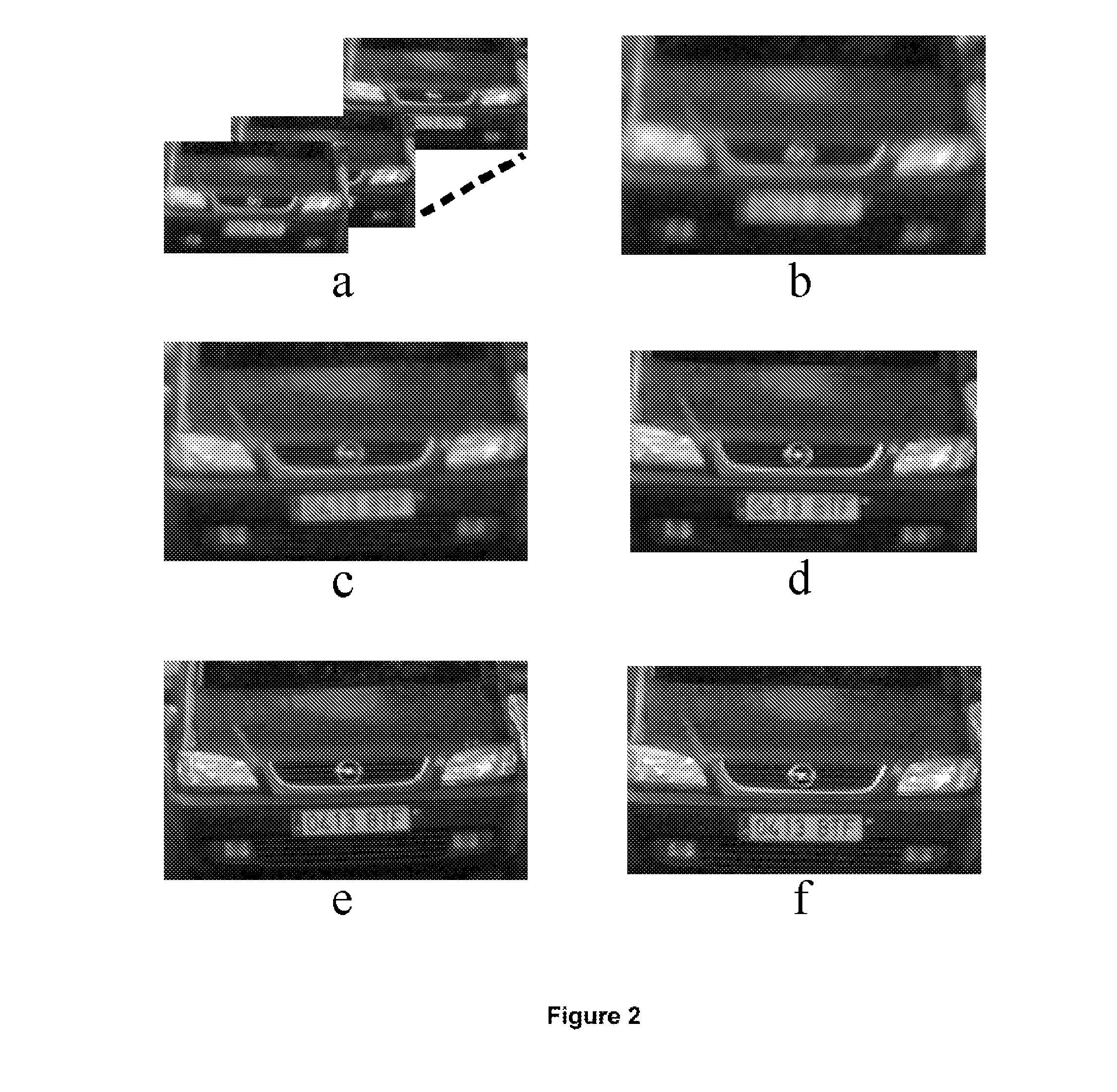Blind deconvolution and super-resolution method for sequences and sets of images and applications thereof
a super-resolution and sequence technology, applied in the field of image processing, can solve the problems of limited practical applicability of this type of method, subsequent decrease in resolution (quality) of the final image, and inherent irresolution in the way in which the high-resolution image is obtained
- Summary
- Abstract
- Description
- Claims
- Application Information
AI Technical Summary
Benefits of technology
Problems solved by technology
Method used
Image
Examples
example 1
Reconstruction of a Blurred Image Due to Movement of the Observer
[0043]The first scenario consists of the detection of license plates, wherein the blur presented by the images is due to the capture conditions due to the movement introduced by the observer on holding the camera (FIG. 2).
[0044]Likewise, the low lighting conditions or the far distance of the object of interest produces low quality input images (FIG. 1a) which hinders both the identification of the alphanumerical characteristics of the license plate and the characteristics which identify the vehicle, such as make, form of the chassis, etc.
[0045]The image obtained by the method of the invention (FIG. 2f) is better even than those obtained by an optical zoom with tripod (FIG. 2e) which are considered of reference, and clearly better than those obtained by other known methods (FIG. 1b, c and d). Details of the image capture process: Olympus Digital camera, 5 Mpixels model C-5050. Aperture: 8.0; Shutter speed: 1 / 20 sec.; Fo...
example 2
Reconstruction of a Blurred Image Due to Movement of the Object
[0046]The second scenario consists of the capture of low-resolution images of a vehicle which moves forward to the camera (FIG. 3). It is observed that the method of the invention is capable of carrying out a compensation due to the movement and obtaining a high-resolution image (FIG. 3e) as output with greater resolution than those obtained by the other techniques (FIG. 3b, c and d), better even than with the best current superresolution technique [Hardie 97], which is incapable of eliminating the blur present in the input images (FIG. 3d). The result of FIG. 3d has been obtained from an implementation of the method described in [Hardie 97] to which an improvement has been incorporated consisting of preserving the edges of the image.
[0047]This would be a case complementary to the previous one, wherein the camera is fixed and the object in movement. Details of the image capture process: Olympus Digital camera, 5 Mpixels ...
PUM
 Login to View More
Login to View More Abstract
Description
Claims
Application Information
 Login to View More
Login to View More - R&D
- Intellectual Property
- Life Sciences
- Materials
- Tech Scout
- Unparalleled Data Quality
- Higher Quality Content
- 60% Fewer Hallucinations
Browse by: Latest US Patents, China's latest patents, Technical Efficacy Thesaurus, Application Domain, Technology Topic, Popular Technical Reports.
© 2025 PatSnap. All rights reserved.Legal|Privacy policy|Modern Slavery Act Transparency Statement|Sitemap|About US| Contact US: help@patsnap.com



